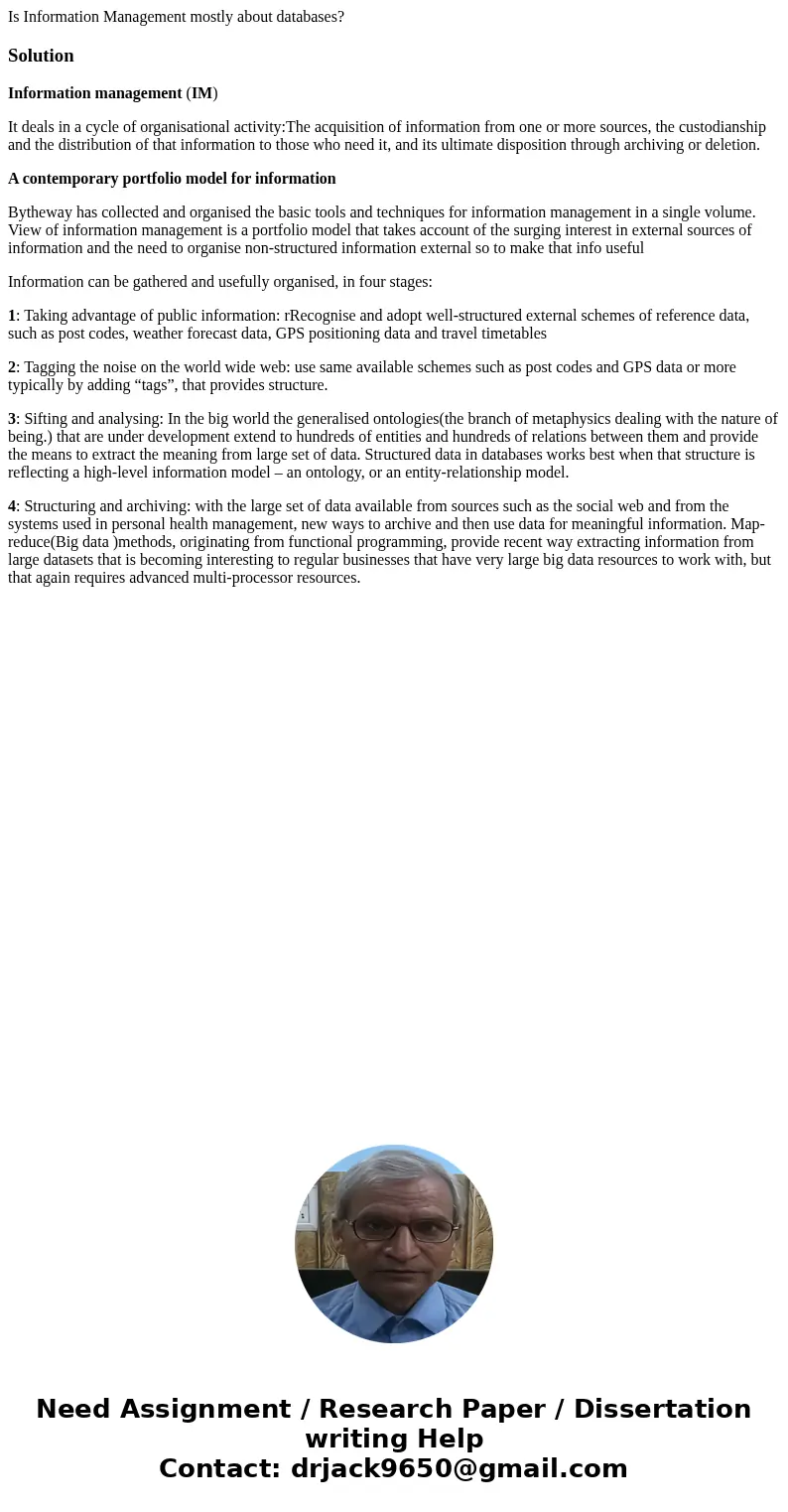Is Information Management mostly about databasesSolutionInfo
Is Information Management mostly about databases?
Solution
Information management (IM)
It deals in a cycle of organisational activity:The acquisition of information from one or more sources, the custodianship and the distribution of that information to those who need it, and its ultimate disposition through archiving or deletion.
A contemporary portfolio model for information
Bytheway has collected and organised the basic tools and techniques for information management in a single volume. View of information management is a portfolio model that takes account of the surging interest in external sources of information and the need to organise non-structured information external so to make that info useful
Information can be gathered and usefully organised, in four stages:
1: Taking advantage of public information: rRecognise and adopt well-structured external schemes of reference data, such as post codes, weather forecast data, GPS positioning data and travel timetables
2: Tagging the noise on the world wide web: use same available schemes such as post codes and GPS data or more typically by adding “tags”, that provides structure.
3: Sifting and analysing: In the big world the generalised ontologies(the branch of metaphysics dealing with the nature of being.) that are under development extend to hundreds of entities and hundreds of relations between them and provide the means to extract the meaning from large set of data. Structured data in databases works best when that structure is reflecting a high-level information model – an ontology, or an entity-relationship model.
4: Structuring and archiving: with the large set of data available from sources such as the social web and from the systems used in personal health management, new ways to archive and then use data for meaningful information. Map-reduce(Big data )methods, originating from functional programming, provide recent way extracting information from large datasets that is becoming interesting to regular businesses that have very large big data resources to work with, but that again requires advanced multi-processor resources.

 Homework Sourse
Homework Sourse